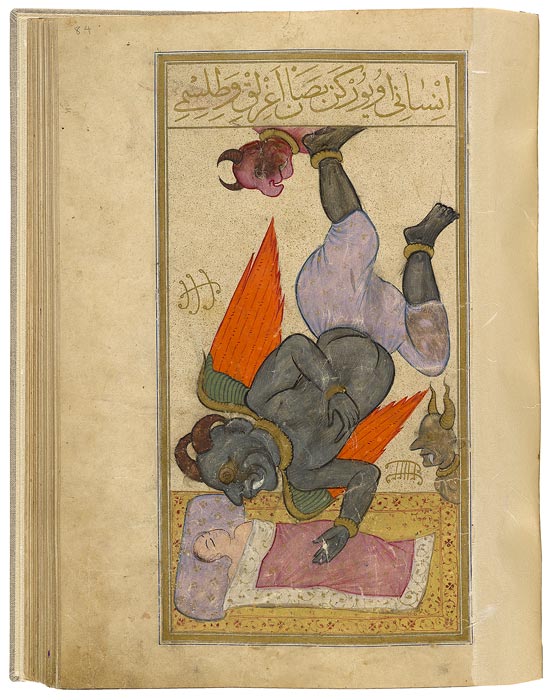
According to the title above the painting, this jinn (a pre-Adam angel cast down with Iblīs, or Satan) is called Kabus, which can literally be translated as Nightmare. Jinns are invisible and were created by God, but are half-men and half-animals, and can behave well or badly. They can inflict illness and other ailments, so deserve protective talismans (the gold emblems). Here Kabus, wearing trousers and gold anklets, and accompanied by two horned attendants, swoops down on the man, hoping to ruin his sleep. This illustration appears in a sixteenth-century Turkish manuscript commissioned by Sultan Murād III.
Natural History and Astrology
The miniatures presented here derive primarily from two extraordinary Islamic manuscripts that depict the natural world and the heavens. The first, Manāfi˓-i hayavān (The Benefits of Animals), is considered one of the ten greatest surviving Persian manuscripts. It dates from the reign of Ghazan Khan (1295–1304), the Mongol ruler who ordered a Persian translation of the book, and concerns the nature and medicinal properties of humans, animals, birds, reptiles, fish, and insects. The other, Matāli˓ al-sa˓āda wa manābi˓ al-siyāda (The Ascension of Propitious Stars and Sources of Sovereign), was commissioned by Sultan Murād III (r. 1574–95), an Ottoman ruler deeply interested in astronomy, cosmology, demonology, poetry, and mysticism.
